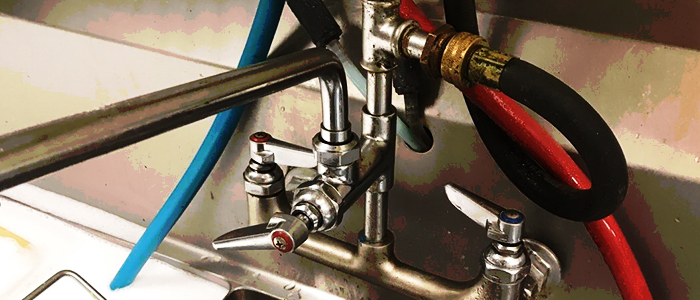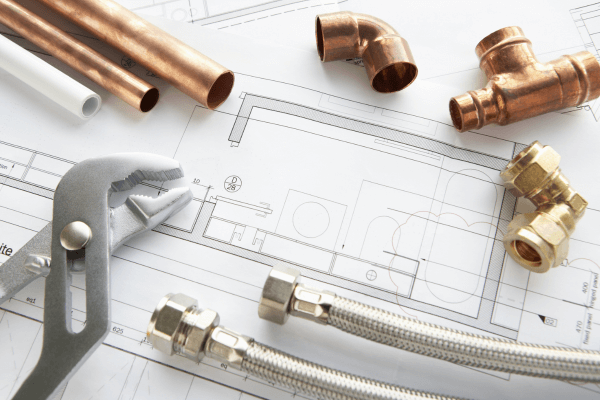The Fundamental Elements of Your Property's Plumbing System
The Fundamental Elements of Your Property's Plumbing System
Blog Article
How do you feel about Plumbing Installation 101: All You Need to Know?

Understanding exactly how your home's plumbing system functions is essential for each house owner. From delivering clean water for alcohol consumption, food preparation, and showering to securely getting rid of wastewater, a properly maintained pipes system is essential for your household's health and comfort. In this comprehensive guide, we'll explore the intricate network that comprises your home's plumbing and offer tips on upkeep, upgrades, and taking care of usual problems.
Intro
Your home's plumbing system is greater than just a network of pipes; it's a complicated system that ensures you have access to tidy water and reliable wastewater removal. Knowing its components and just how they collaborate can assist you avoid expensive repair work and guarantee everything runs efficiently.
Standard Elements of a Plumbing System
Pipes and Tubing
At the heart of your pipes system are the pipes and tubes that lug water throughout your home. These can be made of different materials such as copper, PVC, or PEX, each with its benefits in terms of sturdiness and cost-effectiveness.
Components: Sinks, Toilets, Showers, and so on.
Components like sinks, bathrooms, showers, and bathtubs are where water is made use of in your home. Understanding how these components attach to the pipes system assists in detecting problems and planning upgrades.
Shutoffs and Shut-off Factors
Valves regulate the circulation of water in your pipes system. Shut-off valves are essential throughout emergency situations or when you require to make repair work, allowing you to isolate parts of the system without disrupting water circulation to the whole home.
Water Supply System
Main Water Line
The primary water line connects your home to the local water supply or a personal well. It's where water enters your home and is dispersed to different fixtures.
Water Meter and Pressure Regulatory Authority
The water meter steps your water use, while a stress regulator makes sure that water streams at a secure pressure throughout your home's pipes system, protecting against damages to pipelines and fixtures.
Cold Water vs. Hot Water Lines
Recognizing the distinction between cold water lines, which provide water straight from the main, and hot water lines, which carry heated water from the hot water heater, aids in troubleshooting and planning for upgrades.
Drain System
Drain Pipes Water Lines and Traps
Drain pipelines lug wastewater away from sinks, showers, and bathrooms to the sewage system or septic tank. Traps protect against sewer gases from entering your home and likewise catch particles that could trigger blockages.
Ventilation Pipes
Air flow pipelines permit air into the drain system, protecting against suction that can slow down drainage and cause traps to empty. Proper ventilation is important for preserving the stability of your plumbing system.
Value of Proper Water Drainage
Making certain proper drainage prevents back-ups and water damage. Consistently cleaning up drains pipes and keeping traps can avoid costly repair services and prolong the life of your plumbing system.
Water Heating Unit
Sorts Of Water Heaters
Water heaters can be tankless or conventional tank-style. Tankless heating systems heat water as needed, while storage tanks keep heated water for instant use.
How Water Heaters Connect to the Plumbing System
Comprehending exactly how water heaters connect to both the cold water supply and hot water distribution lines helps in diagnosing problems like inadequate hot water or leaks.
Maintenance Tips for Water Heaters
On a regular basis purging your hot water heater to remove sediment, examining the temperature level setups, and examining for leaks can expand its life expectancy and improve energy performance.
Typical Plumbing Issues
Leakages and Their Causes
Leaks can take place because of aging pipes, loose installations, or high water pressure. Dealing with leakages without delay avoids water damage and mold and mildew growth.
Obstructions and Clogs
Obstructions in drains pipes and toilets are frequently brought on by flushing non-flushable things or a build-up of grease and hair. Making use of drain screens and bearing in mind what drops your drains can prevent blockages.
Signs of Plumbing Troubles to Expect
Low water pressure, slow drains, foul odors, or abnormally high water bills are indicators of potential plumbing troubles that need to be addressed quickly.
Plumbing Upkeep Tips
Regular Assessments and Checks
Set up annual pipes evaluations to catch concerns early. Search for indications of leakages, rust, or mineral buildup in taps and showerheads.
Do It Yourself Maintenance Tasks
Straightforward jobs like cleaning faucet aerators, looking for bathroom leakages using color tablets, or protecting revealed pipes in cool climates can avoid major pipes concerns.
When to Call an Expert Plumbing Professional
Know when a pipes concern calls for specialist experience. Attempting complicated fixings without correct expertise can result in more damage and greater fixing prices.
Upgrading Your Pipes System
Factors for Upgrading
Upgrading to water-efficient components or changing old pipelines can enhance water top quality, lower water expenses, and raise the value of your home.
Modern Pipes Technologies and Their Benefits
Discover technologies like clever leakage detectors, water-saving bathrooms, and energy-efficient water heaters that can save money and reduce environmental influence.
Price Considerations and ROI
Determine the ahead of time prices versus lasting savings when considering pipes upgrades. Many upgrades pay for themselves with decreased energy expenses and less repair work.
Environmental Impact and Conservation
Water-Saving Fixtures and Home Appliances
Setting up low-flow taps, showerheads, and commodes can dramatically lower water use without compromising efficiency.
Tips for Minimizing Water Use
Simple practices like dealing with leaks immediately, taking much shorter showers, and running full lots of laundry and meals can conserve water and reduced your energy costs.
Eco-Friendly Plumbing Options
Think about sustainable pipes materials like bamboo for floor covering, which is durable and eco-friendly, or recycled glass for counter tops.
Emergency situation Preparedness
Steps to Take During a Pipes Emergency situation
Know where your shut-off valves lie and exactly how to switch off the water in case of a ruptured pipe or major leakage.
Importance of Having Emergency Situation Get In Touches With Convenient
Maintain call details for local plumbing technicians or emergency solutions easily offered for fast reaction during a pipes dilemma.
DIY Emergency Fixes (When Appropriate).
Short-term fixes like making use of air duct tape to patch a dripping pipe or putting a container under a leaking faucet can lessen damages till a specialist plumbing professional arrives.
Conclusion.
Understanding the anatomy of your home's plumbing system encourages you to maintain it properly, saving time and money on repair work. By adhering to normal upkeep routines and staying notified regarding contemporary plumbing modern technologies, you can guarantee your plumbing system runs effectively for years to come.
HOW YOUR PLUMBING SYSTEM WORKS
Which Pipes Do What?
Blue lines = fresh water supply entering the building
Red lines = hot water supply entering the building
Grey lines = pipes carrying waste away from the building and venting pipes carrying gases away from the building (through the roof)
YOUR MAIN PLUMBING SYSTEMS
There are two main plumbing systems that support your home s basic plumbing needs one that brings clean water into your home, and one that sends dirty water away from your home. Connected to the toilet, bath, shower, and other faucets in your home, these two systems keep your water flowing in the right directions.
ACCESSING FRESH WATER
Fresh and clean water is brought into your home through the main water supply line . Filtered through one pipe, this water is pressured to flow into the various fixtures in your home at any given time.
This water can be sourced from a well located on your property, a pond or river (mostly cottages), or, as in most cases, from the city s municipal water treatment centre. However, it is important to note that water that is untreated, such as the water siphoned from ponds or rivers, may not be safe to drink. Personal water supplies always need to be treated for hardness and contaminants before consumed.
MUNICIPAL WATER SUPPLIES
Improve taste and odour
Remove sediment
Eliminate hardness
Reduce chlorine
COLD WATER SUPPLY VS. HOT WATER SUPPLY
Cold water flows into your home or building through the service line, which then distributes hot or cold water to your fixtures. This line is most commonly run through a central column that runs floor to floor. Hot water runs in short and straight pipes as the longer the pipeline, the more heat that will be lost in the transfer. Having shorter pipes also allows residents to access hot water more quickly.
WASTE WATER SYSTEM
Your wastewater system is divided into two parts pipes that send wastewater away from your home and venting pipes that send sewer gas away from your home. Sewage water travels through pipes that flush the water and waste towards local sewers that are operated and managed by your city or town. Most sewer systems rely on gravity to move the wastewater to where it needs to go.
The further away from your toilet or sink, the larger wastewater pipes become. This allows for waste to be disposed of from various parts of your home or business at once without pipe blockages. The angle and flow of these pipes are also essential for keeping your waste pipes clear of build up.
https://harrisplumbing.ca/how-your-home-plumbing-system-works/

HOW YOUR PLUMBING SYSTEM WORKS
Which Pipes Do What?
YOUR MAIN PLUMBING SYSTEMS
There are two main plumbing systems that support your home s basic plumbing needs one that brings clean water into your home, and one that sends dirty water away from your home. Connected to the toilet, bath, shower, and other faucets in your home, these two systems keep your water flowing in the right directions.
ACCESSING FRESH WATER
Fresh and clean water is brought into your home through the main water supply line . Filtered through one pipe, this water is pressured to flow into the various fixtures in your home at any given time.
This water can be sourced from a well located on your property, a pond or river (mostly cottages), or, as in most cases, from the city s municipal water treatment centre. However, it is important to note that water that is untreated, such as the water siphoned from ponds or rivers, may not be safe to drink. Personal water supplies always need to be treated for hardness and contaminants before consumed.
MUNICIPAL WATER SUPPLIES
COLD WATER SUPPLY VS. HOT WATER SUPPLY
Cold water flows into your home or building through the service line, which then distributes hot or cold water to your fixtures. This line is most commonly run through a central column that runs floor to floor. Hot water runs in short and straight pipes as the longer the pipeline, the more heat that will be lost in the transfer. Having shorter pipes also allows residents to access hot water more quickly.
WASTE WATER SYSTEM
Your wastewater system is divided into two parts pipes that send wastewater away from your home and venting pipes that send sewer gas away from your home. Sewage water travels through pipes that flush the water and waste towards local sewers that are operated and managed by your city or town. Most sewer systems rely on gravity to move the wastewater to where it needs to go.
The further away from your toilet or sink, the larger wastewater pipes become. This allows for waste to be disposed of from various parts of your home or business at once without pipe blockages. The angle and flow of these pipes are also essential for keeping your waste pipes clear of build up.
https://harrisplumbing.ca/how-your-home-plumbing-system-works/
I am just very eager about Exploring Your Homes Plumbing Anatomy and I am assuming you appreciated our post. Sharing is good. You just don't know, you could be helping someone out. Thanks a lot for your time. Return soon.
Book A Service Call Report this page